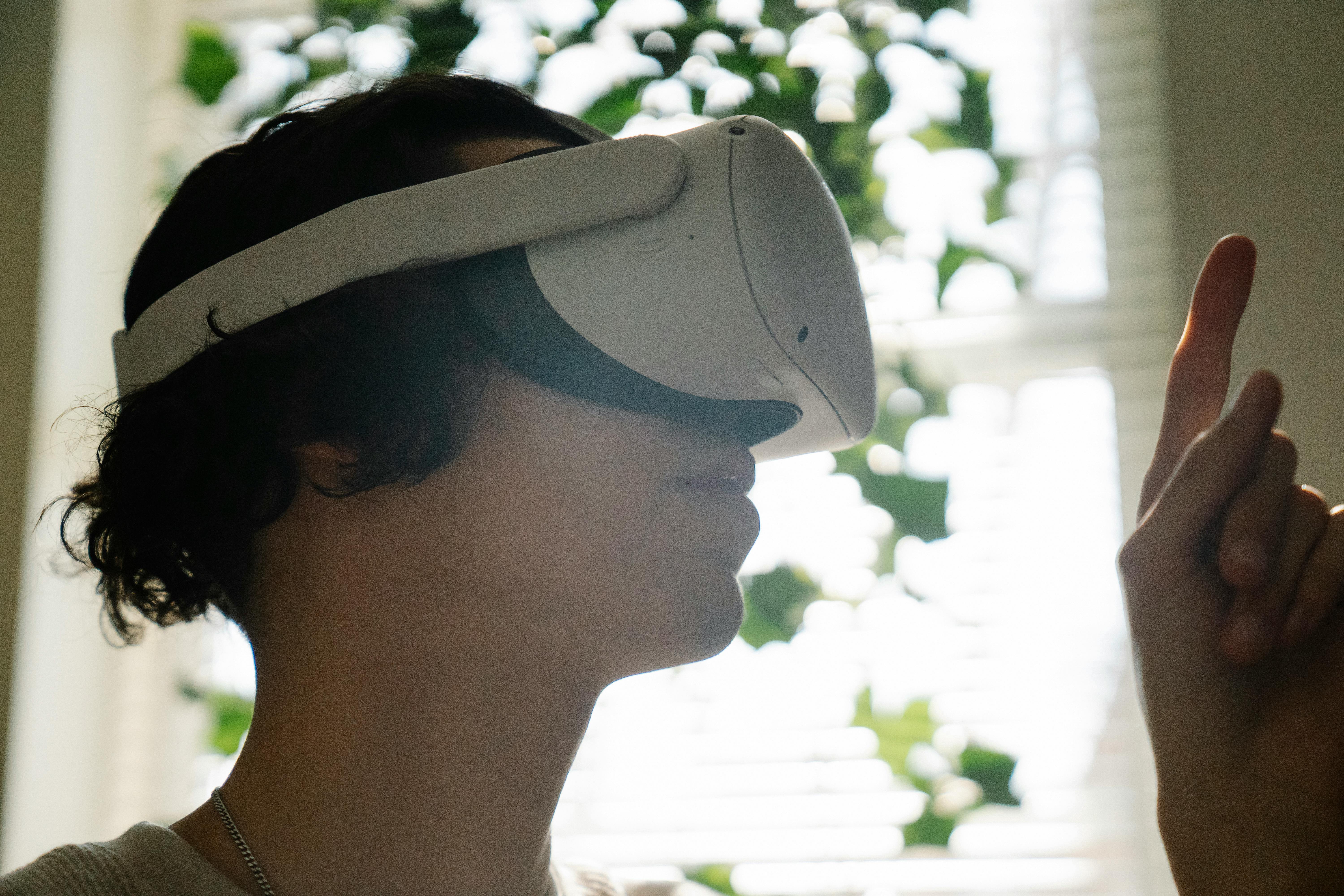
Top Gadget In: Revolutionizing the World of Tech with Unmatched Benefits and Essential Pros and Cons
Wearable technology has witnessed a significant surge in popularity in recent years, revolutionizing healthcare and fitness industries. These innovative devices, designed to be worn on the body, offer users various capabilities ranging from tracking activity levels to monitoring heart rate and sleep patterns. While the rise of wearable technology brings about several advantages, it also entails a few disadvantages worth considering.
On the positive side, wearable Top Gadget Ins have undoubtedly transformed the way we approach healthcare. These devices enable individuals to take charge of their well-being by staying connected to vital health data in real-time. Fitness trackers, for instance, record steps taken, calories burned, and even sleep patterns, empowering users to make informed decisions regarding their physical activity and goals. This self-awareness often leads to increased motivation and accountability, ultimately leading to improved fitness levels.
Moreover, wearables also prove invaluable in the medical field. For patients with chronic illnesses or conditions such as diabetes or heart disease, these devices allow for continuous monitoring of health parameters. Doctors can remotely access patients' data, providing timely insights and adjusting medication or treatment plans if necessary. Consequently, this technology offers patients a greater peace of mind by ensuring continuous care and reducing unnecessary hospital visits.
Despite these indisputable benefits, there are certain drawbacks to be mindful of when it comes to wearable technology. Firstly, relying too heavily on these devices may foster a dependence on external feedback for daily health habits. Some individuals become obsessed with meeting arbitrary numbers recorded by their wearables rather than prioritizing overall well-being. The danger lies in pursuing numbers rather than focusing on genuine personal growth.
Additionally, privacy concerns relating to wearables also arise. These devices collect an abundance of personal health information that users may not feel comfortable sharing with manufacturers or other agencies. There is a pressing need for proper governance and legislation to protect consumer privacy rights while simultaneously providing optimal health monitoring services.
Lastly, wearables can strain users' budgets. The cost of wearable technology varies greatly depending on the brand and features offered. Some high-end gadgets might be out of reach for certain individuals or healthcare systems, limiting accessibility to these potentially life-changing devices. Balancing affordability and innovation remains a challenge within the wearable marketplace.
In conclusion, the rise of wearable technology has undeniably transformed healthcare and fitness, presenting both advantages and disadvantages. These gadgets empower individuals to take control of their health by providing real-time data insights and promoting accountability. Simultaneously, potential pitfalls range from overreliance on numbers to concerns regarding privacy and cost considerations. Nonetheless, as technology advances and legislation evolves, wearables have the potential to play an even greater role in improving the well-being of our society.
 Smart Homes: The Best Gadgets for a Futuristic Living Experience and Their LimitationsSmart Homes: The Best Top Gadget Ins for a Futuristic Living Experience and Their Limitations
Smart Homes: The Best Gadgets for a Futuristic Living Experience and Their LimitationsSmart Homes: The Best Top Gadget Ins for a Futuristic Living Experience and Their LimitationsIn today's rapidly advancing technological world, there is an increasing emphasis on transforming houses into smart homes, enabling occupants to enjoy a truly futuristic living experience. Smart home gadgets are revolutionizing the way we interact with our living spaces, enhancing comfort, convenience, and efficiency. However, it is important to consider the potential limitations that come along with these innovations.
One of the key features of a smart home is automated lighting systems. These gadgets allow users to control their lighting remotely through smartphone apps or voice commands. With the ability to adjust brightness, color, and even schedule lighting patterns, smart lighting creates personalized experiences for each room in your home. However, limitations may arise due to poor connectivity or compatibility issues with other smart devices, which can impact functionality.
Speaking of connectivity, it is crucial for a smart home to have a strong Wi-Fi network. From streaming music to managing security cameras and voice-assistant devices, almost all smart home gadgets rely on a reliable internet connection. The limitation here lies in the fact that if your Wi-Fi network goes down or experiences connectivity issues, some or all of your smart devices might not work as intended.
One of the most popular gadgets in a smart home is the voice-activated assistant. Devices such as Amazon Echo or Google Home bring an element of convenience by allowing users to control various functions using their voice. These assistants can answer questions, set reminders, provide weather updates, and even order groceries—all without lifting a finger. However, sensitive conversations or unintentional activation can occur when these devices are always listening for commands.
An essential component of any future-ready home is intelligent security systems. Smart security cameras, door locks, and motion sensors provide homeowners with enhanced protection and peace of mind. These devices can send real-time alerts to your smartphone whenever any suspicious activity is detected around your property. Nevertheless, certain limitations exist, including the potential for breached or hacked security systems, as any online-based system introduces some level of vulnerability.
Another popular category of smart home gadgets includes automated thermostats and heating systems. These gadgets allow users to fine-tune and control their home's temperature through smartphone apps, ensuring optimal comfort while minimizing energy usage. Additionally, advanced thermostats can learn your preferences and automatically adjust settings to maximize efficiency. Nonetheless, issues can arise due to inaccuracies in sensors or inconsistent internet connectivity that may compromise the reliability of these devices.
Entertainment is also a major aspect of a futuristic living experience. Smart TVs, combined with media streaming devices like Chromecast or Fire TV Stick, offer vast choices of content at our fingertips. With voice control and integration with other smart devices, users can effortlessly enhance their entertainment experiences. However, limitations can occur if compatibility issues arise between different brands or when streaming services become temporarily unavailable.
While smart home gadgets provide incredible value and convenience, it is important to acknowledge their limitations. Connectivity issues, compatibility challenges, and vulnerabilities to hacking are a few considerations to keep in mind. Nonetheless, as technology continues to evolve, addressing these limitations will likely improve, ensuring smarter and safer homes for all.
 Revolution in Communication: Top Mobile Gadgets Changing How We Connect and Their DrawbacksThe revolution in communication has been undeniably influenced by the emergence of Top Gadget In mobile gadgets that have radically changed the way we connect with others. These devices have revolutionized communication and made it possible for individuals to stay connected regardless of their location. However, with every advancement, there are certain drawbacks that come along. Let's delve into the top mobile gadgets that have transformed communication and explore their drawbacks.
Revolution in Communication: Top Mobile Gadgets Changing How We Connect and Their DrawbacksThe revolution in communication has been undeniably influenced by the emergence of Top Gadget In mobile gadgets that have radically changed the way we connect with others. These devices have revolutionized communication and made it possible for individuals to stay connected regardless of their location. However, with every advancement, there are certain drawbacks that come along. Let's delve into the top mobile gadgets that have transformed communication and explore their drawbacks.Smartphones:
Smartphones have become an integral part of our lives. They offer a plethora of features that have transformed the way we communicate. With instant messaging apps and social media platforms, staying in touch with family, friends, and colleagues has never been easier. Moreover, smartphones allow us to access emails while on-the-go, making it possible to remain connected without needing a computer. However, excessive smartphone usage is often criticized for hindering face-to-face interactions and social connections.
Tablets:
The introduction of tablets like iPads has provided another convenient means of communication. These devices offer large screens, making browsing the internet and video calling more enjoyable. Tablets are particularly preferred by professionals who need to access work-related documents on the move. Nevertheless, their larger size can make them less portable than smartphones, limiting their usability when mobility is a priority.
Wireless Earbuds:
Wireless earbuds like AirPods have reimagined how we listen to music and communicate hands-free. They provide users with the freedom of movement while still being able to take phone calls or listen to music without disrupting those around them. This gadget has rejuvenated the rapidly growing podcast industry as it allows listeners to multitask effectively. On the other hand, constantly wearing wireless earbuds may lead to decreased social interactions and hinder attentiveness in public situations.
Wearable Devices:
The rise of wearable devices like smartwatches Fitbits has significantly expanded communication possibilities on-the-go. These gadgets not only enable quick text message replies and call receiving but also keep track of our fitness level. Wearable devices have quickly become an integral part of our daily lives. However, their small screens can sometimes limit user experience, making certain tasks cumbersome compared to using a larger device like a smartphone.
Virtual Reality (VR) Headsets:
When it comes to communication in the digital age, virtual reality headsets have revolutionized the gaming and video calling experience. With VR headsets, users can immerse themselves in a virtual world and interact with others remotely, transcending geographic barriers. Nevertheless, the high costs associated with VR headsets remain a significant drawback, prohibiting widespread adoption.
In conclusion, the revolution in communication brought about by top mobile gadgets cannot be denied. These devices have undoubtedly changed how we connect and made it more convenient for individuals to stay in touch. However, it's important to acknowledge the drawbacks that come along with the rapid advancements in this field. It is crucial to maintain a balance between taking advantage of these innovative gadgets while ensuring that face-to-face interactions and social connections are not compromised.
 Automotive Tech Gadgets: Enhancing Your Driving Experience with Cutting-Edge InnovationsAutomotive Tech Top Gadget Ins: Enhancing Your Driving Experience with Cutting-Edge Innovations
Automotive Tech Gadgets: Enhancing Your Driving Experience with Cutting-Edge InnovationsAutomotive Tech Top Gadget Ins: Enhancing Your Driving Experience with Cutting-Edge InnovationsDriving has come a long way from just getting from point A to point B. With the continuous advancements in technology, automotive tech gadgets have emerged as game-changers, transforming how we interact with our vehicles and enhancing our overall driving experience. From safety features to entertainment options, here are some cutting-edge innovations that will revolutionize your time on the road:
1. Smart Dashboards: Imagine a dashboard that not only displays your speed and fuel gauge but also integrates with your smartphone. Smart dashboards utilize touchscreens or voice commands to control various functionalities like GPS navigation, music selection, answering calls, or even adjusting the temperature inside your car, creating a more connected and convenient driving experience.
2. Advanced Driver Assistance Systems (ADAS): ADAS encompasses a range of safety features geared towards preventing accidents and alerting drivers to potential dangers on the road. These technologies include adaptive cruise control, forward collision warning systems, lane departure warnings, blind-spot detection, and pedestrian detection. By continuously monitoring your surroundings and providing real-time alerts, ADAS aims to minimize human errors and increase overall road safety.
3. Heads-up Displays (HUD): HUDs project important driving information directly onto the windshield within your line of sight. Rather than taking your eyes off the road to check your speed or navigation directions on a traditional display, HUDs provide real-time data like speed, turn-by-turn directions, safety warnings, and more. This keeps your focus on the road ahead while still accessing critical information effortlessly.
4. Connected Car Technology: With the rise of smartphones and internet connectivity, the idea of a connected car has become a reality. Modern vehicles can now access online services through in-car Wi-Fi or integrated cellular networks. This connectivity enables a plethora of functionalities such as real-time traffic updates, weather forecasts, remote start/lock/unlock via smartphone apps, and access to streaming services directly from your car's entertainment system.
5. Advanced Parking Assist Systems (APAS): Parallel parking or navigating in tight spaces can be stressful for many drivers. APAS, also known as self-parking systems, uses sensors, cameras, and advanced algorithms to maneuver your vehicle accurately and safely into a parking space with minimal driver intervention. This technology takes the guesswork out of parking and eases the anxiety associated with tricky parking scenarios.
6. Electric Vehicle (EV) Charging Innovations: As electric vehicles gain popularity, advancements in charging technology become essential. The latest EV charging gadgets aim to speed up charging times, improve efficiency, and enhance convenience. Examples include wireless charging pads that eliminate the hassle of plugging in cables and hyper-fast chargers that significantly decrease overall charging time.
7. Advanced Infotainment Systems: Long gone are the days of basic car radios. Advanced infotainment systems bring the best of entertainment and convenience into your vehicle. These feature-rich interfaces provide access to various digital media sources, including streaming services like Spotify or Apple Music, internet radio, podcasts, and even social media integration—all integrated seamlessly into your car's touchscreen display.
From making our driving safer to ensuring a connected and enjoyable journey, automotive tech gadgets continuously push the boundaries of innovation. As our dependency on technology grows, these cutting-edge advancements will undoubtedly shape the future of transportation, gradually introducing us to autonomous vehicles and even more tech-driven road experiences
 Drones: The Ultimate Gadgets for Photography, Surveillance, and Recreation - Benefits vs. RisksDrones, the ultimate Top Gadget Ins for photography, surveillance, and recreation, have emerged as game-changers in various fields. These advanced unmanned aerial vehicles (UAVs) have revolutionized the way we capture moments, gather intelligence, and indulge in recreational activities. However, along with their numerous benefits, drones also come with certain risks.
Drones: The Ultimate Gadgets for Photography, Surveillance, and Recreation - Benefits vs. RisksDrones, the ultimate Top Gadget Ins for photography, surveillance, and recreation, have emerged as game-changers in various fields. These advanced unmanned aerial vehicles (UAVs) have revolutionized the way we capture moments, gather intelligence, and indulge in recreational activities. However, along with their numerous benefits, drones also come with certain risks.Let's start by exploring the benefits. When it comes to photography, drones offer a whole new perspective. They provide the ability to capture breathtaking aerial shots that were once only possible from helicopters or planes. With their high-resolution cameras and stabilizing technology, drones allow photographers to elevate their creativity and produce stunning visual content.
In addition to photography, drones have found applications in surveillance. These flying devices equipped with cameras enable law enforcement agencies and security personnel to monitor public spaces efficiently. They help reduce crime rates by providing detailed real-time footage, enhancing situational awareness, and facilitating faster response times.
Moreover, recreational use of drones has gained tremendous popularity. With features like obstacle avoidance systems and GPS location stabilization, anyone can fly a drone safely and enjoyably, even without prior experience. Drones provide an exhilarating experience for hobbyists who want to explore the skies or capture stunning footage of their adventures.
However, despite these remarkable benefits, there are some risks associated with drones that need to be addressed. Firstly, privacy concerns arise when drones enter restricted or private areas without consent. The potential misuse of drones for invasive surveillance is a growing issue that regulatory authorities need to address effectively.
Another major concern is unauthorized drone flights near airports or restricted airspace. These incidents can threaten air travel safety and result in dangerous situations if not controlled adequately. Drone operators must always follow strict regulations and guidelines to prevent airspace violations and collision risks with manned aircraft.
Additionally, there are potential dangers related to the reliability of drone technology itself. Technical malfunctions or human errors could lead to accidents, causing harm to people or property on the ground. Regulations and safety training are crucial in promoting responsible drone usage and minimizing such risks.
In conclusion, drones have become incredibly versatile gadgets, providing unparalleled opportunities in various fields. Their use in photography, surveillance, and recreation has brought immense benefits, allowing us to capture stunning visuals, enhance security measures, and engage in thrilling activities. However, the risks surrounding privacy, airspace violations, and safety concerns cannot be overlooked. By implementing adequate regulations, promoting responsible usage, and prioritizing safety measures, we can harness the full potential of drones while minimizing their associated risks.
 Virtual Reality (VR) and Augmented Reality (AR): The Forefront of Entertainment and Training GadgetsVirtual Reality (VR) and Augmented Reality (AR) have emerged as the cuttTop Gadget Ing-edge technologies revolutionizing the entertainment and training industries. VR enables users to enter a simulated environment, while AR overlays digital information onto the real world. Together, they offer unique and captivating experiences that blur the line between fiction and reality.
Virtual Reality (VR) and Augmented Reality (AR): The Forefront of Entertainment and Training GadgetsVirtual Reality (VR) and Augmented Reality (AR) have emerged as the cuttTop Gadget Ing-edge technologies revolutionizing the entertainment and training industries. VR enables users to enter a simulated environment, while AR overlays digital information onto the real world. Together, they offer unique and captivating experiences that blur the line between fiction and reality.Virtual Reality:
VR immerses users in a completely computer-generated three-dimensional environment. By wearing a headset, users block out their surroundings and experience a virtual world that feels incredibly lifelike. Various industries, such as gaming, healthcare, and education, have capitalized on the possibilities that VR offers.
Gaming: VR gaming takes gameplay to a whole new level. Instead of simply controlling characters on a screen, players are transported within the game itself. They can interact with objects, battle foes, and explore unprecedented digital landscapes.
Education: In education, VR takes learning beyond traditional textbooks. Students can dive into historical events, unravel complex scientific concepts, or even visit distant planets. By engaging multiple senses, VR enhances comprehension and leaves a lasting impact on learners.
Healthcare: The healthcare industry utilizes VR for a multitude of applications. Surgeons practice intricate procedures in realistic simulations without putting actual patients at risk. VR has also proven effective in treating phobias, providing therapy for PTSD patients, and offering pain management techniques through immersive distractions.
Architecture and Design: VR helps architects and designers visualize their creations before they are brought to life. Through virtual walkthroughs, clients can accurately experience every aspect of their future homes or offices, making alterations in real-time without costly changes in the physical world.
Augmented Reality:
Unlike virtual reality, augmented reality does not offer an entirely immersive experience. Instead, AR overlays digital content onto the real world using smartphones, tablets, or dedicated headsets. AR enhances our perception by seamlessly blending virtual visuals with our immediate environment.
Gaming: AR gaming introduces interactive elements into everyday surroundings. Players, using their mobile devices, can battle virtual monsters in their own living rooms, solve puzzles in familiar locations, or engage with virtual characters as if they were tangible.
Retail and E-commerce: AR has transformed the retail experience by allowing customers to virtually try on clothes or visualize how furniture would look in their homes. It has also enabled businesses to offer interactive product information and personalized shopping recommendations, enhancing customer engagement and satisfaction.
Training and Simulation: By overlaying digital information onto physical objects, AR enhances training processes in numerous industries. This technology allows workers to receive real-time instructions, access relevant data, and troubleshoot complex machinery without having to refer to manuals. Pilots, for instance, use AR systems to obtain critical flight information while keeping their eyes focused on the cockpit.
Medicine: AR empowers medical professionals by providing visual guidance during procedures and surgeries. Physicians can superimpose images from MRI or CT scans onto a patient's body during surgeries, making operations more accurate and reducing potential complications.
Both virtual reality and augmented reality are rapidly evolving technologies that continue to captivate users across different sectors. As advancements in hardware and software continue, we can expect even more mind-blowing experiences that further bridge the gap between imagination and reality.
 Eco-Friendly Tech Gadgets: Promoting Sustainability Through Innovation - Advantages and DisadvantagesEco-friendly tech Top Gadget Ins are devices designed with sustainable practices in mind to minimize their environmental impact and promote sustainability in the world of technology. These innovative gadgets utilize advanced technologies and green materials that help reduce energy consumption, emissions, and waste throughout their lifecycle while delivering optimal functionality. Let's delve into the advantages and disadvantages of eco-friendly tech gadgets:
Eco-Friendly Tech Gadgets: Promoting Sustainability Through Innovation - Advantages and DisadvantagesEco-friendly tech Top Gadget Ins are devices designed with sustainable practices in mind to minimize their environmental impact and promote sustainability in the world of technology. These innovative gadgets utilize advanced technologies and green materials that help reduce energy consumption, emissions, and waste throughout their lifecycle while delivering optimal functionality. Let's delve into the advantages and disadvantages of eco-friendly tech gadgets:Advantages:
1. Environmental Benefits: Perhaps the most crucial advantage of eco-friendly tech gadgets is their positive impact on the environment. Manufacturing processes are tailored to minimize carbon footprints by efficiently utilizing resources, minimizing pollution, and reducing waste generation.
2. Energy Efficiency: Eco-friendly gadgets are built with energy-efficient components that drastically reduce power consumption during operation compared to conventional devices. This helps users save on electricity bills while reducing overall carbon emissions.
3. Renewable Energy Adoption: Many eco-friendly gadgets incorporate solar panels or other renewable energy solutions, enabling users to harness clean energy sources for charging or powering the devices.
4. Extended Lifespan: These gadgets are often designed to last longer, reducing the frequency at which users need to replace them. Durable construction and upgradeability options uphold sustainability principles by maximizing usage and minimizing electronic waste accumulation.
5. Minimal Toxicity: Eco-friendly tech gadgets are manufactured using materials free from harmful chemicals such as lead, mercury, or PVC. This ensures safer handling, disposal, and minimizes potential risks to human health and the environment.
6. Innovative Features: Many eco-friendly tech gadgets not only prioritize sustainability but also offer cutting-edge features and functionalities that meet or exceed those found in traditional alternatives.
Disadvantages:
1. Higher Cost: One of the primary drawbacks of eco-friendly tech gadgets is their often higher price tag compared to similar conventional devices due to the research, development, and incorporation of sustainable materials and technologies.
2. Limited Availability: While eco-friendly gadgets have gained popularity over recent years, they might still have limited availability in comparison to conventional options. Consumers may need to invest more time in researching and seeking out specific eco-friendly devices.
3. Compatibility Challenges: Some eco-friendly tech gadgets, especially those integrating alternative energy sources, may have compatibility issues with existing infrastructure or may require additional accessories for full functionality.
4. Performance Trade-offs: Although manufacturers strive to match conventional functionalities, certain eco-friendly gadgets might still experience performance trade-offs (e.g., slower speeds, reduced power output). Users should carefully consider their requirements when opting for these devices.
5. Lack of Standardization: With the continuous evolution of eco-friendly gadgets, the lack of standardization in sustainable practices and labeling can make it challenging for users to evaluate and compare different products accurately.
Despite these disadvantages, the advantages of eco-friendly tech gadgets greatly outweigh the drawbacks. Their environmental benefits, energy efficiency, and innovative features contribute to a greener future while emphasizing sustainability in the constantly advancing world of technology.
 The Best Fitness Trackers: Monitoring Health Like Never Before but at What Cost?Fitness trackers are all the rage these days, as they have revolutionized the way we monitor our health and fitness. These small devices come in various shapes and sizes, from sleek wristbands to smartwatches, and they offer a wide range of features to cater to different needs. However, while fitness trackers have undoubtedly made monitoring health more convenient than ever before, there are still a few downsides that don't come without a cost.
The Best Fitness Trackers: Monitoring Health Like Never Before but at What Cost?Fitness trackers are all the rage these days, as they have revolutionized the way we monitor our health and fitness. These small devices come in various shapes and sizes, from sleek wristbands to smartwatches, and they offer a wide range of features to cater to different needs. However, while fitness trackers have undoubtedly made monitoring health more convenient than ever before, there are still a few downsides that don't come without a cost.One of the greatest advantages of fitness trackers is their ability to track various health metrics. Most trackers can monitor your heart rate, distance traveled, steps taken, calories burned, and even your sleep patterns. This wealth of data can help you set goals, understand your body better, and make informed decisions regarding your general well-being. Some advanced trackers even measure blood oxygen levels and stress levels, providing comprehensive insights into your physiological state.
Moreover, fitness trackers often come equipped with user-friendly apps or web interfaces that allow you to store and analyze all the collected data. This makes it easier than ever to track progress over time, set goals, and share achievements with friends or online communities. Many devices also offer personalized coaching or remind you to move if you've been inactive for too long. Such features act as great motivators for staying active and maintaining a healthy lifestyle.
However, these benefits do not come without potential downsides. Firstly, a lot of people find themselves becoming excessively fixated on their tracker's metrics, obsessively tracking every step they take and becoming overly anxious if they fall short of their targets. The pressure to constantly improve can be mentally taxing and may even lead to unhealthy behaviors or negative self-image.
Another concern is the inherent invasiveness of fitness trackers – remembering to wear a device at all times means granting it 24/7 access into your personal life and even your health data. As concerns about privacy grow in society today, it's important to consider where this information ultimately ends up and who has access to it. Could your health and fitness data be shared with insurance companies, employers, or even third-party advertisers?
Furthermore, the cost of owning a fitness tracker can vary significantly. Entry-level options tend to be quite affordable, but Top Gadget In-of-the-line trackers with advanced features can come at a lofty price. Moreover, these devices are prone to wear and tear or becoming outdated as new models and technologies emerge. Ultimately, you must consider whether the investment is worth it for you.
In conclusion, while fitness trackers undeniably ushered in an era of unprecedented health monitoring, they also have their drawbacks. They allow us to track countless aspects of our well-being conveniently, motivating us towards healthier lifestyles. However, we must remain conscious of the potential downsides, such as becoming overly reliant or obsessed with data and the privacy implications of sharing sensitive personal health information. Ultimately, evaluating the pros and cons will help determine whether the benefits provided by fitness trackers justify their associated costs for each individual user.
 Gaming Revolution: Top Gadgets That Are Changing the Gaming IndustryIn the ever-evolving world of gaming, innovative gadgets have been driving a gaming revolution, transforming the way we play and enjoy games. These Top Gadget In gadgets are leaving a lasting impact on the gaming industry, bringing about exciting changes and enhancing our gaming experiences.
Gaming Revolution: Top Gadgets That Are Changing the Gaming IndustryIn the ever-evolving world of gaming, innovative gadgets have been driving a gaming revolution, transforming the way we play and enjoy games. These Top Gadget In gadgets are leaving a lasting impact on the gaming industry, bringing about exciting changes and enhancing our gaming experiences.Virtual Reality (VR) headsets sit at the forefront of this gaming revolution. These futuristic headsets allow players to immerse themselves in virtual worlds like never before. With cutting-edge technology and advanced motion tracking capabilities, VR headsets offer a truly interactive and realistic gaming experience. Players can navigate through virtual environments, engage with characters, and feel a sense of presence in the game.
Another game-changing gadget is cloud gaming platforms. These remote services free players from traditional gaming hardware limitations. Cloud-based platforms enable gamers to access and play a wide range of high-quality games on various devices without needing expensive gaming consoles or PCs. By leveraging powerful servers and streaming technology, cloud gaming allows players to access their gaming libraries anytime, anywhere, making gaming more accessible than ever.
Additionally, haptic feedback controllers bring a new level of immersion into the gaming world. These devices can simulate touch sensations through vibrations or motion feedback, allowing gamers to feel tactile experiences within virtual environments. Haptic feedback controllers provide a higher level of interaction and realism in gameplay, making it a must-have gadget for any avid gamer.
Streaming equipment has also hugely impacted the gaming industry in recent years. Designed for content creators and streamers, high-quality cameras, microphones, and capture cards enable gamers to share their gameplay experiences with the world in real-time. Streaming gadgets provide an opportunity for gamers to connect with fellow enthusiasts while broadcasting their skills or reviews across various platforms such as Twitch or YouTube.
Furthermore, advanced gaming keyboards and mice have become essential tools for competitive gamers. These gadgets are specifically designed to optimize performance, accuracy, and customization options for different gaming genres. Features like programmable keys, adjustable RGB lighting, and precise sensors give players an edge during intense gameplay, boosting their overall gaming experience.
On a broader scale, gaming smartphones have emerged as top gadgets adept at meeting the needs of mobile gamers. With high refresh rates, powerful processors, and enhanced graphics capabilities, gaming smartphones provide a seamless gaming experience on the go. These devices bridge the gap between gaming consoles and mobile devices, attracting a large community of gamers who demand high-performance portable gaming platforms.
Artificial intelligence (AI) is yet another aspect of this gaming revolution. AI-powered gaming companions and in-game assistants enhance the overall gameplay experience. These virtual entities utilize machine learning algorithms to adapt to player behavior, provide hints, or even act as co-op partners. Through intelligent decision-making and tailored interactions, AI in games adds depth and variability to players' experiences.
Without a doubt, each of these gadgets plays a significant role in transforming the gaming industry. They provide new ways for players to engage, connect, and challenge themselves in their gaming adventures. Whether it's immersing oneself in virtual reality or leveraging cloud-based gaming platforms, these top gadgets are at the forefront of reshaping how we define and enjoy video games.
In conclusion, the gaming revolution presents an exciting wave of technological advancements through its top gadgets. Virtual reality headsets, cloud gaming platforms, haptic feedback controllers, streaming equipment, advanced keyboards and mice, gaming smartphones, and AI companions are changing the game for gamers worldwide. As technology continues to evolve rapidly, so does the ever-expanding world of gaming gadgets—ushering gamers into an era of enriched experiences they never thought possible before.
 Smart Kitchen Gadgets: How Technology is Transforming Cooking, Eating, and Clean-UpSmart kitchen Top Gadget Ins are revolutionizing the way we cook, eat, and clean up. With the rapid advancement of technology, our kitchens have become smarter than ever before. These innovative gadgets incorporate various features such as automation, connectivity, and artificial intelligence to enhance our overall culinary experience.
Smart Kitchen Gadgets: How Technology is Transforming Cooking, Eating, and Clean-UpSmart kitchen Top Gadget Ins are revolutionizing the way we cook, eat, and clean up. With the rapid advancement of technology, our kitchens have become smarter than ever before. These innovative gadgets incorporate various features such as automation, connectivity, and artificial intelligence to enhance our overall culinary experience. One of the most popular smart kitchen devices is the smart refrigerator. Gone are the days of manually writing grocery lists as smart fridges come equipped with touchscreens that can display recipes, create shopping lists, and even provide nutritional information. Some models are even capable of connecting to your smartphone so you can monitor your groceries remotely while you're out shopping.
Another smart gadget that has gained immense popularity is the smart oven. These technologically advanced ovens offer features like Wi-Fi connectivity and voice assistants, allowing you to control and monitor your cooking in a seamless manner. You can adjust temperature settings, set timers, and receive notifications on your smartphone - making sure your meals turn out perfect every time.
The introduction of smart speakers like Amazon Echo or Google Home has further transformed our kitchens. These voice-controlled virtual assistants make it possible to set timers, ask for recipe instructions, or even play your favorite music while you cook. Hands-free control enables multitasking and ensures you stay organized in the kitchen.
Smart coffee makers have also become extremely popular among coffee enthusiasts. These coffee makers can be programmed from your smartphone so your coffee is ready when you wake up. In addition, some models include features like personalized brew strength settings, coffee bean storage monitoring, and even automatic reordering of supplies.
Cleaning up after a meal is often seen as a tedious task, but with smart kitchen gadgets such as robotic vacuum cleaners and automatic garbage cans sweeping crumbs or disposing of waste has become hassle-free. Robotic vacuum cleaners can maneuver around the kitchen floor, making sure all the dirt and food particles are collected efficiently. Automatic garbage cans open by just waving your hand over them or using voice commands, allowing for touchless operation and providing added convenience.
Lastly, smart scales and food processors have also made their mark in modern kitchens. Advanced digital scales come equipped with Bluetooth or Wi-Fi connectivity, enabling accurate and easy measurement tracking and recipe scaling. Smart food processors can connect to your smartphone, providing access to a library of recipes and even automatically adjusting settings based on the selected recipe.
In conclusion, smart kitchen gadgets have revolutionized the cooking, eating, and clean-up process. From smart fridges to robotic vacuum cleaners, these gadgets have transformed our kitchens into intelligent spaces. They bring convenience, efficiency, and customization to our culinary experience, making cooking a more enjoyable and seamless task. With technology constantly evolving, it's only a matter of time before our kitchens become even smarter, further enhancing our overall dining experiences.
 Educational Tech Tools: Gadgets That Are Shaping the Future of Learning and Their Potential DownsidesIn today's rapidly evolving digital age, educational technology has emerged as a cornerstone of modern learning. From interactive tablets to AI-powered tutoring apps, a wide range of gadgets have revolutionized classroom experiences and transformed traditional teaching methods. The potential benefits seem limitless, but it is crucial to also consider the potential downsides of relying too heavily on these tools.
Educational Tech Tools: Gadgets That Are Shaping the Future of Learning and Their Potential DownsidesIn today's rapidly evolving digital age, educational technology has emerged as a cornerstone of modern learning. From interactive tablets to AI-powered tutoring apps, a wide range of gadgets have revolutionized classroom experiences and transformed traditional teaching methods. The potential benefits seem limitless, but it is crucial to also consider the potential downsides of relying too heavily on these tools.Educational tech tools, such as smartboards and online platforms, facilitate a more engaging and personalized learning experience for students. These gadgets help educators present information in interactive ways, incorporating multimedia elements that make lessons come alive. Students can access a vast array of educational resources online, enabling them to explore diverse Top Gadget Inics and gain a deeper understanding through audio, video, and interactive applications.
With e-books and e-readers, educational content is widely accessible anytime and anywhere. These products eliminate the need for physical textbooks, which can be costly and cumbersome. Digital book formats offer additional benefits like instant word definitions, annotation features, and customizable formatting options to suit different learning styles.
Smart pencils and pens have given students the ability to write digitally or transfer handwritten notes into electronic formats effortlessly. These tools enhance convenience by organizing and instantly syncing notes across multiple devices. By curating comprehensive databases of their ideas and findings, learners can efficiently gather information and track progress more effectively.
Another remarkable innovation in educational tech is virtual reality (VR). Through VR headsets, students delve into immersive simulations that transport them to historical events or distant lands. This technology enhances experiential learning by immersing learners in realistic environments. It fosters empathy towards various perspectives, promotes critical thinking skills through problem-solving scenarios, and enables safe experimentation in STEM fields before conducting real-world experiments.
However, it is important not to overlook the potential downsides of relying heavily on educational tech tools. Firstly, there exists a significant digital divide, particularly among underprivileged students who lack equal access to devices or stable internet connections. This inequality can widen the achievement gap, as students without sufficient access may struggle to keep up in an increasingly technology-dependent learning environment.
While digital interactions may offer convenience, they also reduce face-to-face interactions critical for social and emotional development. Overexposure to screens can lead to decreased communication, limited non-verbal cues, and increased feelings of isolation. Hence, it is crucial for educators to strike a balance between online education and traditional teaching methods that foster meaningful human connections.
Furthermore, the integration of educational tech can place a considerable burden on teachers. It necessitates constant adaptation to new tools and platforms, potentially overwhelming educators who already bear significant workloads. Technical issues within classroom settings can disrupt the learning process, frustrating both teachers and students if solutions are not readily available.
Finally, there remains a concern about data privacy and potential misuse of student information. The reliance on online platforms and third-party apps exposes students' personal data, raising ethical concerns related to companies collecting learners' information without adequate consent or security measures.
While the transformative potentials of educational tech tools are evident, careful consideration of their potential downsides is crucial. Striving for equitable access, maintaining balance in approaches to learning, supporting teachers in their adoption of these tools, and ensuring strong data protection measures are important steps toward maximizing the benefits while mitigating the negative impacts of this technology.
 Smart Personal Assistants: Bridging the Gap Between Efficiency and Privacy ConcernsSmart personal assistants are becoming increasingly popular in today's tech-driven world. These virtual assistants, powered by artificial intelligence, aim to bridge the gap between efficiency and privacy concerns. They provide users with convenient and efficient ways to interact with their devices and access information while raising important questions regarding data privacy.
Smart Personal Assistants: Bridging the Gap Between Efficiency and Privacy ConcernsSmart personal assistants are becoming increasingly popular in today's tech-driven world. These virtual assistants, powered by artificial intelligence, aim to bridge the gap between efficiency and privacy concerns. They provide users with convenient and efficient ways to interact with their devices and access information while raising important questions regarding data privacy.One significant advantage of smart personal assistants is their ability to streamline tasks and improve overall productivity. Whether it's setting reminders, creating calendar events, sending messages, or making calls, these assistants allow users to accomplish tasks using voice commands or text input. This hands-free approach can be particularly useful when juggling multiple responsibilities or when physical limitations hinder conventional device interaction.
Furthermore, smart personal assistants offer quick access to a wealth of information. By hearing a user's voice command or reading typed queries, these assistants can fetch data from the internet, retrieve weather updates, answer general knowledge questions, provide directions, offer recommendations, and more. This convenience is especially appreciated when users are on-the-go or have limited time to spare.
In delivering these capabilities, however, privacy concerns arise. To function effectively, smart personal assistants must process and store data from users' interactions. This raises concerns over how this data is secured and utilized. Users worry about potential breaches that could compromise sensitive information or government agencies exploiting this data for surveillance purposes.
Tech companies continuously work to address these concerns by implementing stronger security measures. Conversations between users and smart personal assistants are encrypted to protect against unauthorized access. Privacy settings are now customizable, enabling users to control the type of information these assistants can access and how long it is retained.
Despite significant security efforts, doubts remain. Concerns circle back to the privacy trade-offs individuals make when embracing these Top Gadget Ins fully. Sharing personal data with virtual assistants is essential for improved productivity and tailored responses. However, users must weigh these benefits against the potential risks associated with data handling by technology companies.
Maintaining transparency is crucial for smart personal assistant providers to gain user trust. Offering clear communication about data usage, security practices, and empowering users to easily access or delete their data helps build a more trustworthy relationship.
In conclusion, smart personal assistants have revolutionized the way we interact with technology, facilitate daily tasks, and seek information. They bring unparalleled efficiency and convenience but also raise privacy concerns regarding data security. While strides have been made in deterring potential threats, striking a balance between efficiency and privacy is an ongoing challenge that companies need to address effectively as technology evolves.
 The Evolution of E-readers: Turning Page on Traditional Reading With Benefits and ShortcomingsThe Evolution of E-readers: Turning Page on Traditional Reading With Benefits and Shortcomings
The Evolution of E-readers: Turning Page on Traditional Reading With Benefits and ShortcomingsThe Evolution of E-readers: Turning Page on Traditional Reading With Benefits and ShortcomingsIn the ever-changing world of technology, e-readers have emerged as a revolutionary Top Gadget In that has transformed how we consume and enjoy books. These electronic devices have come a long way since their inception, with significant evolution over the years. They have gradually turned the page on traditional reading methods by providing readers with a host of benefits and quite a few shortcomings.
Initially, e-readers started off as simple devices with basic functionalities such as displaying text in an easy-to-read format on a screen. However, as time progressed, they began to incorporate more innovative features. The introduction of e-ink technology revolutionized their appearance, making the screen resemble an actual paper page. This innovation resulted in reduced eye strain, enhancing the reading experience for users across the globe.
One of the major turning points in the evolution of e-readers was the expansion of their storage capacity. In earlier models, e-readers had limited space, typically allowing users to store only a handful of books at once. However, with technological advancements, modern e-readers can now store thousands of books within their compact frames. This has proven to be a valuable asset for avid readers who can now carry their entire library in their pocket.
Another significant improvement revolves around connectivity features. Older e-reader models supported limited access to the internet or lacked it altogether. The ability to download books directly onto the device via Wi-Fi or cellular networks has significantly enhanced convenience and eliminated the need for physical bookstores entirely.
E-readers have also gone beyond their initial purpose of solely serving as reading devices; they now offer a variety of additional features that have further solidified their position as indispensable gadgets. These features may include built-in dictionaries, highlighting options, note-taking abilities, customizable screens for visually impaired readers, and even audiobook integration.
Despite these valuable features and technological advancements, e-readers do come with their own set of shortcomings. One of the most commonly cited drawbacks is the absence of the satisfying physical interaction with a tangible book. For many literary enthusiasts, the weight, texture, and smell of a physical book contribute significantly to the reading experience. E-readers struggle to replicate this intimate connection, which some readers may find irreplaceable.
Another downside lies in the limitations of e-reader displays. Although e-ink technology has significantly improved, it still falls short when compared to the vibrancy and color reproduction of traditional printed media. Graphics-intensive books, such as children's picture books or graphic novels, may not display as effectively on e-readers.
Furthermore, unlike books that can be enjoyed in any lighting condition, most e-readers rely on built-in illumination or reflective ambient light from the surroundings. This limitation can make reading in certain environments challenging or impossible without external light sources.
In conclusion, e-readers have evolved tremendously over time, completely transforming the way we read and access books. Their invaluable benefits include reduced eye strain, increased storage capacities, effortless connectivity, and multifunctional capabilities. However, they may also fall short in replicating the physicality of printed books and ensuring vibrant visual representations across all genres. Nevertheless, it is impossible to deny the convenience and accessibility that e-readers have brought to avid readers all around the world.
